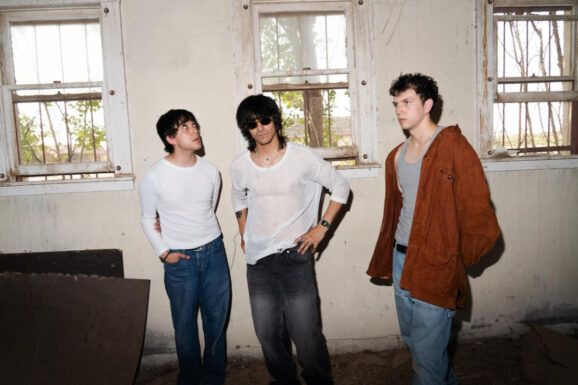Zakir Hussain’s appearance at the Flynn Center March 19th posited this renaissance man of music and film not only as international ambassador of good will, but also as a wholly gracious mentor for flautist Rakesh Chaurasia. The border brilliant concert vividly suggested how the Indian percussionist and composer has so successfully collaborated with the eclectic likes of the Grateful Dead’s Mickey Hart, jazz icon guitarist John McLaughlin and the avatar of contemporary banjo, Bela Fleck, among many others.
If the prospect of elongated pieces solely rendered by two musicians sounded daunting in advance for more than a few of those in attendance in the Main Stage venue, there was no sense of restlessness before or during the ninety-plus minute concert. Rather, the pre-show anticipation was palpable as the room (including its balcony) virtually filled, while the absence of early departees during the course of the approximately nine-minute performance reaffirmed the rapt attention the duo compelled from the stage.
It was, however, a somewhat puzzling musical progression that followed Hussain’s lighthearted introduction of the program at its outset. In fact, the most arresting moments of the concert occurred in the very first number: after an extended flute introduction from Chaurasia that was equally haunting and tantalizing, it wasn’t long after the percussionist began to play that the pair were engaging in a subtle call and response that, rather than just swapping short flurries of notes, turned into exchanges of extended passages. Fully in keeping with Hussain’s earlier comment about musical conversation, it was nothing less than riveting to see the two men so fully absorbed in the moment(s).
As Hussain advised during his self-effacing opening remarks, the second raga, of virtually equal length to the prior number, featured a more conventional arrangement by which Hussain played an accompanying role to Chaurasia. The trade-offs during this piece, however, were unfortunately marred by more than a couple crowd-pleasing expressions from the musicians that somewhat undercut the solemnity of their entry to the stage, not to mention the otherwise arresting atmosphere they had conjured up to this point in the evening.
Which isn’t to say the audience didn’t respond in kind. On the contrary, the reaction was generally in balance to the more intense moments Hussain and Chaurasion elicited with their practiced combination of showmanship and musicianship. Still, the intricacy of the players’ interaction diminished as the concert hit its homestretch, even as Hussain embarked upon a nuanced solo, while the shortest ‘tune’ of the night was clearly positioned in lieu of an encore that never came. It was no question a well-earned standing ovation that Hussain directed at Chaurasia—he moved to the back of the stage and gestured to his young(er) counterpart– yet the thought lingered that the two Indians had perhaps watered down their native music just a little bit too much for its own good.
That said, the ebb and flow of this show reminded how observing two musicians in action reaffirms just how difficult it is to play music well, not to mention how rewarding it can be when the musicians in question are veritable masters like these.
Photos Courtesy Ross Mickel Bootleggers Beware Photography










